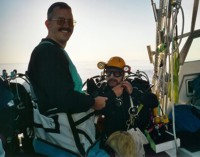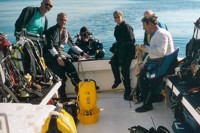Dive Report for the Dina Dee II on May 21 06
After the early morning shock from the alarm clock, I dragged myself over to my computer to check the marine forecast. The night before NOAA was calling for 2-4 ft seas, but the NOAA data buoys were showing 6 ft. The forecast had changed overnight, and was now calling for 3-5 ft, and the buoys were still showing 6 ft. I jumped in the car expecting to be blown out at the dock.
We had a full boat, and Captain Roger figured we would poke our nose out and see what the conditions were like. With a south wind, the conditions would be immediately apparent. It was a little lumpy, but not the 6 ft I was expecting. There was an underlying swell around 4 ft with some small chop on top. We agreed the conditions were acceptable, and continued our trip to the San Saba (aka Magnolia).
Roger dropped the hook right next to the prop shaft about 30 ft from the boilers. A quick wrap around the shaft, and the ball was on its way. The vis was in the 20 ft range with a temperature of 50 deg at 80 ft and 53 on the surface. There was enough light to see by once your eyes adjusted. I headed off down the shaft toward the bow.
Seabass were darting in and out of the wreck, and several large Tog were nibbling on the growth encrusting it. As usual Cunners were omnipresent. Some would swim right up to my mask. I was a little fearful of them nipping at my only exposed skin, my lips. After bagging a few large Seabass, and one of the larger Tog, I figured I’d just look around. By this point I was off the shaft, and running a reel which made it difficult to hold a pole spear.
In several places there were piles of rusted screws which appeared to have been contained in boxes. The hardwood was still in the sand around the pile. I kept hoping bouncy castle for sale they were Magnolia bars for which the wreck was nicknamed. There are several high points about the wreck with many hull plates lying in the sand. Small lobster where hiding in a few holes. One big one was seen, but found to have eggs. Several regulation size lobsters came up, but not in my bag.
Back on the boat, several divers mentioned large Seabass around the boilers. They also mentioned a gill net snagged in that area. Since I did not see the boilers on the first dive, I headed that way on the second dive. There were large schools of Cunners around the top of the boiler along with several large Tog nibbling away. I didn’t see the Seabass on the boiler, or the gill net for that matter, but did find a raised deck plate with large Seabass hiding beneath. One made the mistake of poking it’s nose out and finding its way into my bag. Several others cowering inside, but I was unable to get a clear shot.
When I got back onboard Captain Bob was getting ready to do his dive and pull the hook. He just took a short look around, grabbed a lobster or two, then popped the hook. Heading back the seas had calmed down a bit with indications that Sunday would be an even better dive.

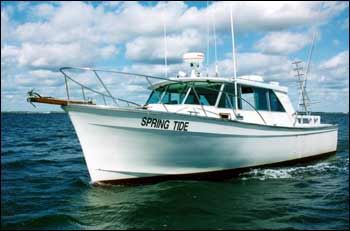 Summary:
Summary: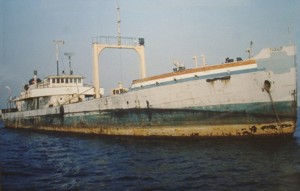
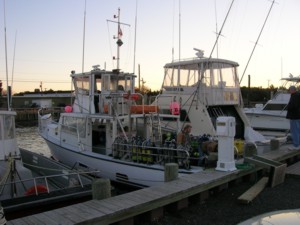 Synopsis: Cloudy surface, dark bottom 30ft vis with light. Trigger, Lobster, Winter Flounder, Tog, few Sea Bass, Artifacts, Temp 58.
Synopsis: Cloudy surface, dark bottom 30ft vis with light. Trigger, Lobster, Winter Flounder, Tog, few Sea Bass, Artifacts, Temp 58.
